
Contents










Local Taste · Written by Kim Samuel Photographed by Studio Kenn
Pillar of Busan Cuisine
Milmyeon
Milmyeon (wheat noodles) resembles naengmyeon (cold buckwheat noodles) in appearance
but has a different taste. The former is eaten by pouring meat broth with thin, floating ice onto noodles
that are neither thick nor thin. The broth and its taste vary from restaurant to restaurant, but Busan
milmyeon is the name if wheat noodles and pork broth are used. Created by people who fled the
Hamheung region of present-day North Korea for Busan, the noodle dish is considered
a specialty of the nation’s largest port city.
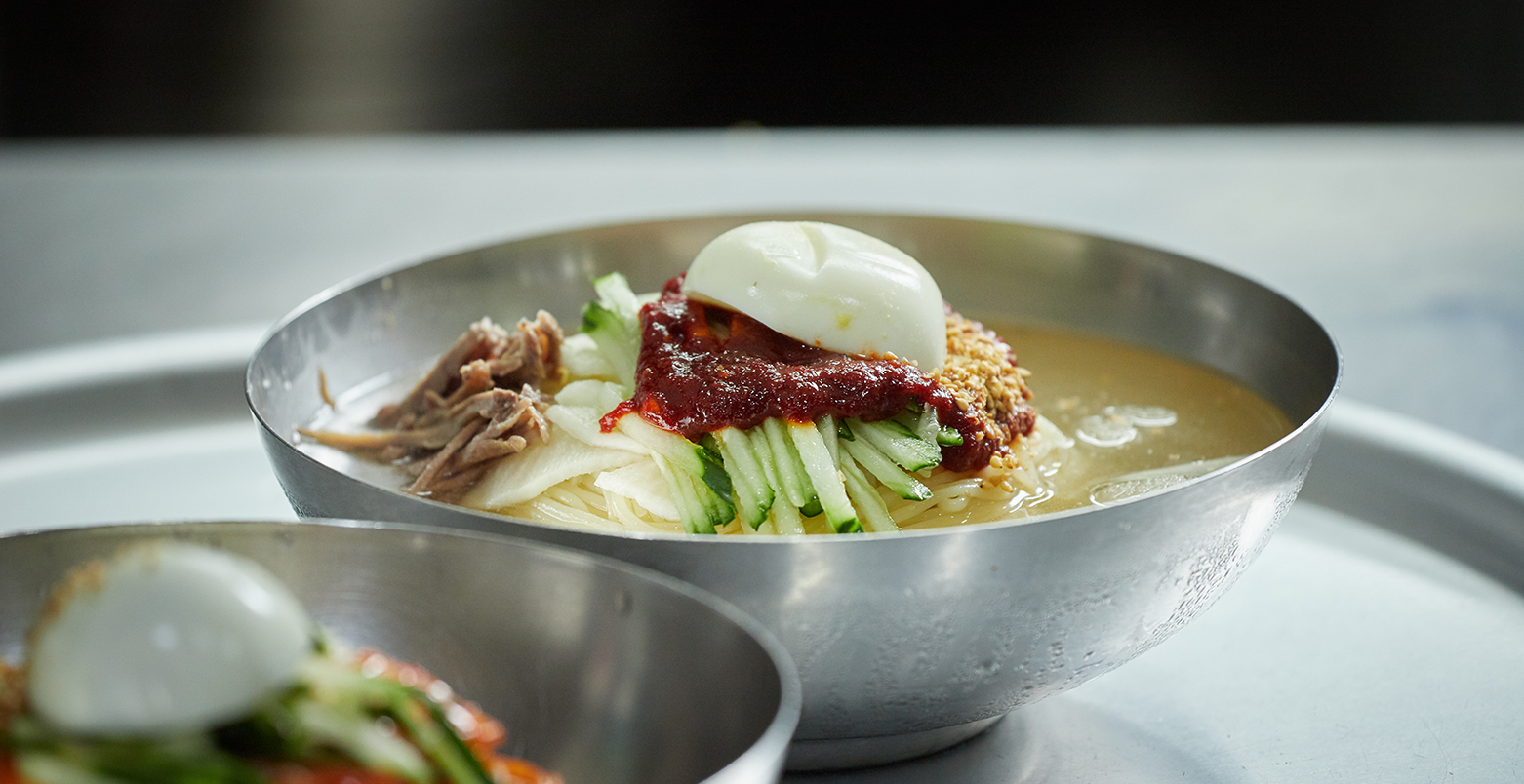
To begin with, naengmyeon and milmyeon have noodles as their main component but buckwheat is mainly used to make the former’s noodles and wheat flour is used to make those of the latter. Aside from regular naengmyeon, unique variations of the dish in Gyeonggi-do Province are Jinju and Sacheon naengmyeon. These versions were handed down through records from the Joseon Dynasty (1392-1910) period. Using meat pancakes and seafood broth, these two offshoots are considered separate dishes and distinct from the more common rendition of naengmyeon.
Milmyeon can be quickly cooked with meat broth and noodles, and carries the painful memories of those who had to flee their hometowns in the Hamheung region of what is now North Korea. The dish was born after Koreans from Hamheung who settled in Busan during the Korean War began making naengmyeon but longed for the noodles they grew up with, milmyeon, in their hometowns. Buckwheat used to make naengmyeon, was not only hard to come by in Busan, which was chaotic during the war, but also required a great deal of attention. Naengmyeon noodles made of buckwheat were unpopular, however, as Busanites were unfamiliar with the food. As wheat flour, which was rare in the past, grew more plentiful thanks to massive aid from the American military, production of noodles made of wheat flour began instead of buckwheat. Milmyeon is still uber popular in Busan, which has continuous rows of restaurants specializing in the dish.
Beginning as the cold noodle dish naengmyeon and evolving into one using wheat noodles, milmyeon has a short history yet its distinct flavor makes it one of Busan’s signature dishes.
Where to Eat
Buoyed by the excellent public transportation system and the plethora of famous tourist attractions in Busan, milmyeon has grown more popular among Koreans and non-Koreans alike. The use of wheat flour makes milmyeon cheaper than naengmyeon, and a taste enriched by the addition of condiments from Gyeongsangnam-do Province has further popularized the dish.
An online search for good places to eat milmyeon will bring up the top three to five restaurants in Busan, with each place offering a unique taste. Comparing the taste of the dish adds to the fun and mystery of milmyeon. Naeho Naengmyeon, known as Busan’s first milmyeon restaurant, sits in a back alley that makes it hard for even city residents to frequent. This is because the restaurant’s founder Jeong Han-geum wrote in her will, “Don’t relocate the restaurant.” Because Naeho’s name contains the word “naengmyeon,” its milmyeon is closer to Pyeongyang naengmyeon and has a blander taste than general variations of milmyeon. Other milmyeon restaurants use medicinal herbs or add a lot of sugar in serving the dish 1980s style. Kukje Milmyeon has spicier and cleaner condiments than other restaurants specializing in the dish.
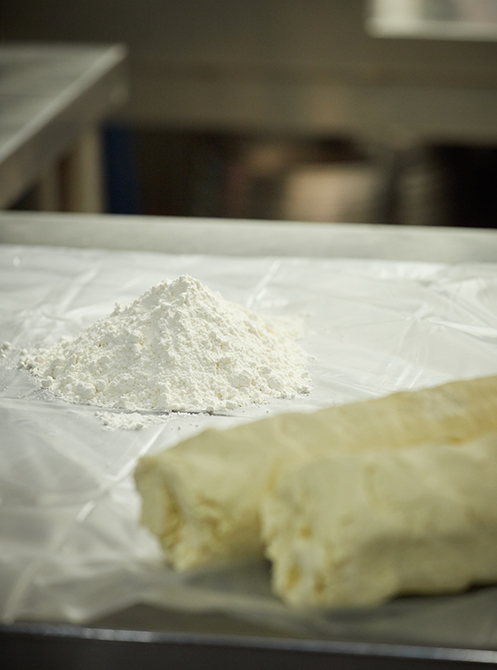 Milmyeon is cheaper than naengmyeon because it is made from wheat flour.
Milmyeon is cheaper than naengmyeon because it is made from wheat flour.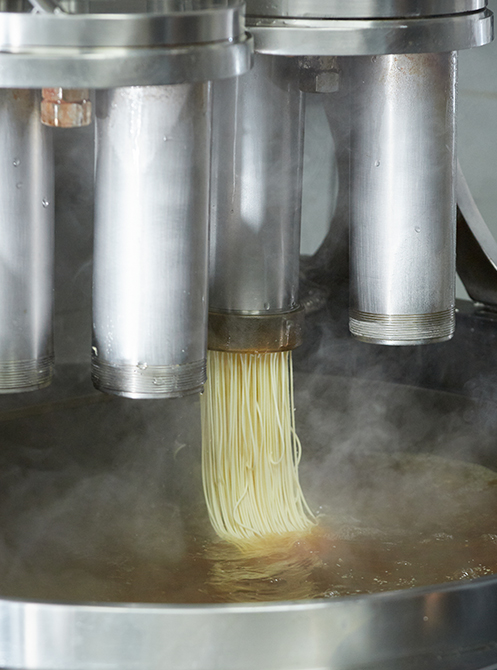 The noodles of milmyeon are of average thickness, neither too thin nor too thick.
The noodles of milmyeon are of average thickness, neither too thin nor too thick. Once the noodles are ready, they are boiled, rinsed several times in cold water and rolled up to be placed in a bowl.
Once the noodles are ready, they are boiled, rinsed several times in cold water and rolled up to be placed in a bowl.Variety of Taste
The two kinds of milmyeon are water milmyeon, or noodles in water, and bibimmyeon (spicy noodles), or noodles mixed with gochujang (red pepper paste). No major difference exists in ingredients, but in general, water milmyeon is noodles in water, and to make bibimmyeon, red condiments are poured on the noodles instead of water. Unlike naengmyeon, water milmyeon needs fewer condiments, but to taste the clean flavor of meat broth like in Pyeongyang naengmyeon, try milmyeon without adding any condiments.
Almost every milmyeon restaurant serves radish kimchi as a side dish and on request, heated meat broth is served separately in cups filled from a kettle. As soon as an order is placed, sesame oil is sprinkled over chewy noodles with shredded cucumber, condiments and half a boiled egg. Certain restaurants garnish noodles with beef braised in soy sauce ripped along the grain or insert thick meat pieces.
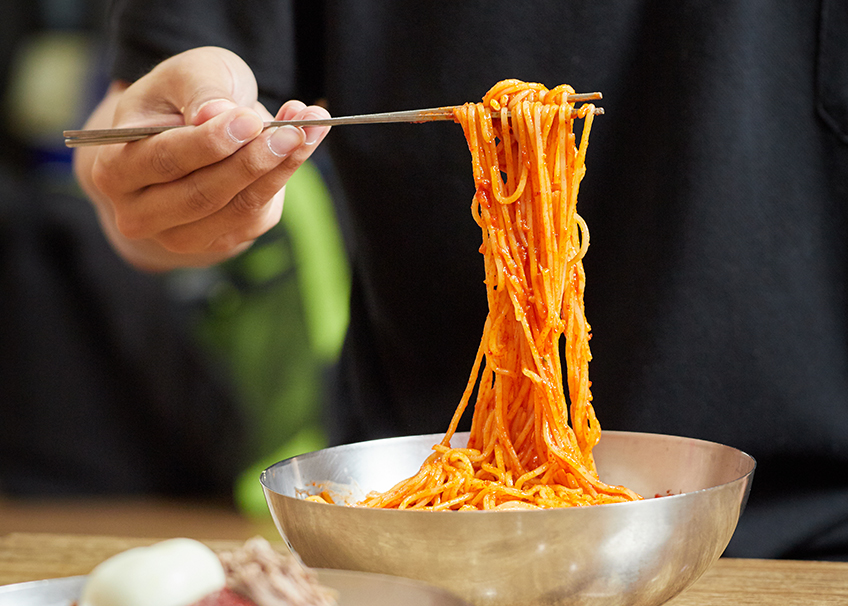
The dish tastes best if the noodles are not cut.
If a diner untangles noodles stuck together in a ring with chopsticks and devours them noisily, noodles are coming into the mouth along with savory and spicy soup. Noodles made of wheat flour taste better when eaten without being cut by scissors, and this is because water getting into scissor-cut noodles removes glutinosity and thus removes the chewy taste. Chefs unanimously recommend eating a bowl of milmyeon in a gulp after properly picking up noodles rather than cutting chewy noodle strips coming out of the kitchen. Milmyeon, a hit even among those unfamiliar with cold noodles, remains a giant among the indigenous foods of Busan.
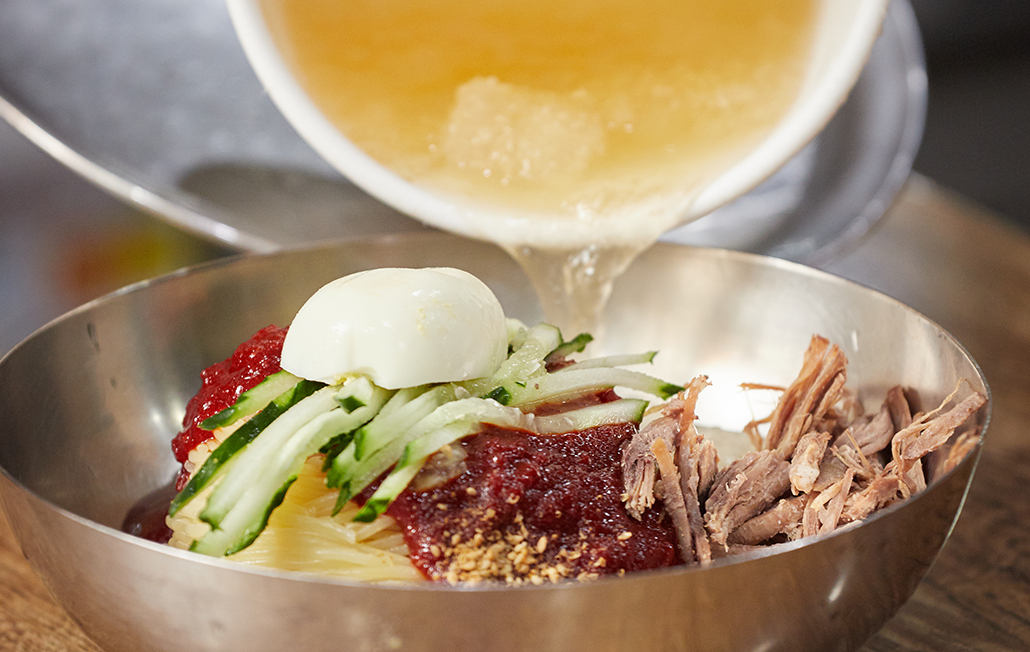 An icy cold broth is poured onto the noodles to finish preparation.
An icy cold broth is poured onto the noodles to finish preparation.
Other Articles















